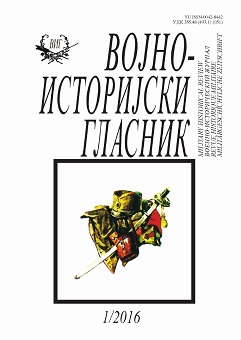Регрутни састав војске Србије 1883–1912. Систем позива и неки његови друштвени аспекти
The Recruitment Structure of the Serbian Army, 1883–1912: The Conscription System and its Social Aspects
Author(s): Milić J. MilićevićSubject(s): Military history, Political history, Military policy, History of Education, 19th Century, Pre-WW I & WW I (1900 -1919), Sociology of Education
Published by: Institut za strategijska istraživanja
Keywords: Serbian Army; recruitment and conscription system; social and education structure; 1883-1912; regular military service; literacy; soldiers;
Summary/Abstract: During the 19th century, many European countries gradually introduced regular military service and this trend was adopted in the Balkans at the end of the 1870s and early 1880s. The system of recruitment and conscription in Serbia was established in 1883 and was changed five times in the following twenty years. However, the basic statistics such as conscription of all male citizens at the age of 20 to 21 years, as well as the model of forming groups based on ages, remained mainly the same. The length of service in the Army was flexible. Under the law of 1883, and its modifications during the time, the social model of the Serbian youths conscripted to military service becomes more understandable. According to the available data, most conscripts were young men from rural areas, and half of them were from the zadruga (a type of rural community). Drafted soldiers were Orthodox Serbs while the percentage of nonOrthodox was practically negligible. Those soldiers were mostly illiterate, more so than soldiers from other European countries.
Journal: Vojnoistorijski glasnik
- Issue Year: 2016
- Issue No: 1
- Page Range: 9-25
- Page Count: 17
- Language: Serbian

